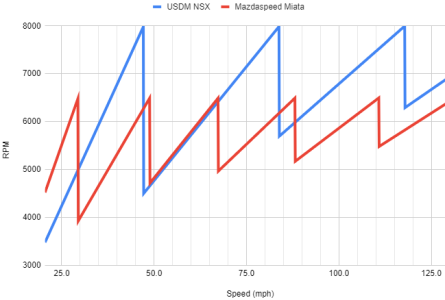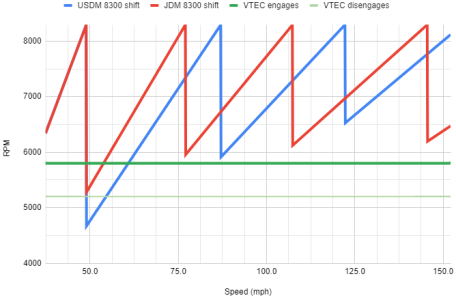One of the first things I noticed when I bought my 5-speed NSX was how long the gears feel. I heard the JDM gearset mentioned a lot, so I found the old FAQ entry that has the ratios and speeds (https://web.archive.org/web/20161117235936/http://www.nsxprime.com/wiki/Gear_Ratios), but reading is not quite the same as seeing, so I plotted it:
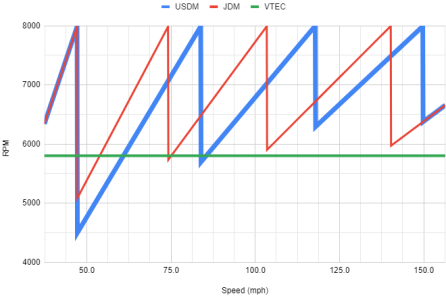
It's disappointing that there's no improvement for the 1->2 shift point, but getting into the powerband sooner in 2nd would be nice, and I never have a need to accelerate hard above interstate speeds so the shortened 2->3 (83mph to 74mph) shift is no concern.
I'd heard so many people on YouTube mention the JDM gears allowing the engine to stay in VTEC that I was a little surprised to see that's not actually true. Urban legend, I guess.
Doing both the JDM gears and the NSX-R 4.235 final drive helps a little more:
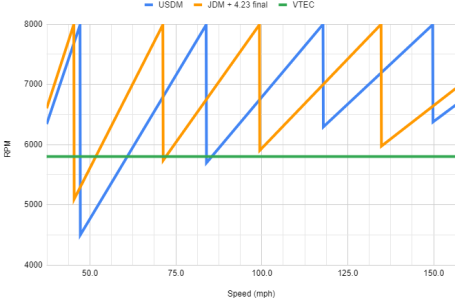
...the 1->2 shift happens at 45mph instead of 47, and 2->3 at 71mph instead of 83.
Also interesting seeing just how closely 1st, 2nd, 3rd, and 4th of the USDM 6-speed match the JDM 5-speed:
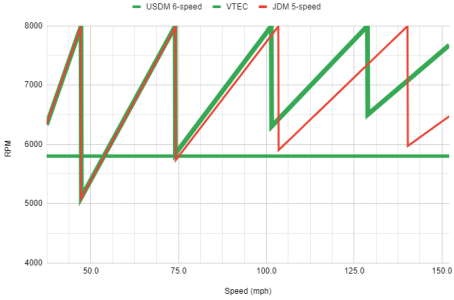

It's disappointing that there's no improvement for the 1->2 shift point, but getting into the powerband sooner in 2nd would be nice, and I never have a need to accelerate hard above interstate speeds so the shortened 2->3 (83mph to 74mph) shift is no concern.
I'd heard so many people on YouTube mention the JDM gears allowing the engine to stay in VTEC that I was a little surprised to see that's not actually true. Urban legend, I guess.
Doing both the JDM gears and the NSX-R 4.235 final drive helps a little more:

...the 1->2 shift happens at 45mph instead of 47, and 2->3 at 71mph instead of 83.
Also interesting seeing just how closely 1st, 2nd, 3rd, and 4th of the USDM 6-speed match the JDM 5-speed:

Last edited:



